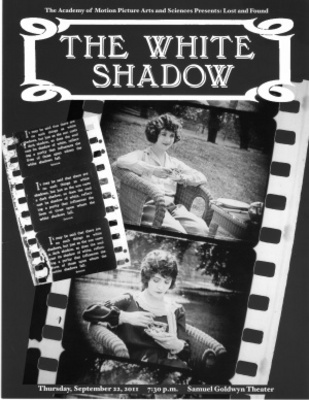Director: Alfred Hitchcock. Woolf & Freedman/Selznick.
SILENT

Cast and Crew
Producers: Michael Balcon/Victor Saville.
Writers: Michael Morton, Alfred Hitchcock.
Camera: Claude L. McDonald.
Sets: Alfred Hitchcock.
Betty Compson, Clive Brook, A.B. Imeson, Daisy Campbell, Henry Victor.
Synopsis
A tale of two polar opposite twin sisters, Georgina and Nancy (Compson) – one craves the party life in Paris, the other is a good girl with a ‘soul’ (the shadow of the film’s title). Mixed in with this is a gentlemanly American (Brook) who ends up romancing both following a joke played by one of the girls.
Review
One of the ‘Hitchcock five’, a number of previously lost or rarely seen movies made in the silent era by the director Alfred Hitchcock because the copy of the film had degraded to such a degree they were deemed unwatchable. The films were released in 2013 by the BFI to much fanfare following the committed efforts of film restorers.
The White Shadow is not one of the better films and this isn’t just because a third of the film is lost forever. Co-producer Balcon said in 1969 that the film was rushed into at the time as they were desperate to retain Compson, a popular actress at this time in Britain and then later in Hollywood, as a leading lady (she had just helmed their hit Woman to Woman) before she returned to the states.
Big mistake as this film tanked at the box office and the results show with a thin and frustratingly dull plot. Think of one of the most boring story-lines in Downton Abbey without the words. It doesn’t help that a segment of the film is missing entirely leading to a shocking jump in the story where several characters have either died or changed beyond recognition; the script was obviously silly but this is compounded further at this point.
Amongst the amusing silent movie period discrepancies are the tourists who change their travel plans so they can hook up with a total stranger on a boat and the sensitively worded police communications (which thankfully have improved since 1924) on missing person letters, explaining to frantic loved ones that “thousands go missing and are never seen again”.
The restorers are to be praised whole heartedly for their own masterful cinematic wizardry. International teams must have been run ragged cleaning and re-framing this little batch and richly deserve the plaudits heaped on them. Although there a few brief moments during the film when the original film stock’s disintegration was too much to overcome, it never detracts from watching the film and reminds us again of the quality work that has gone in here.

